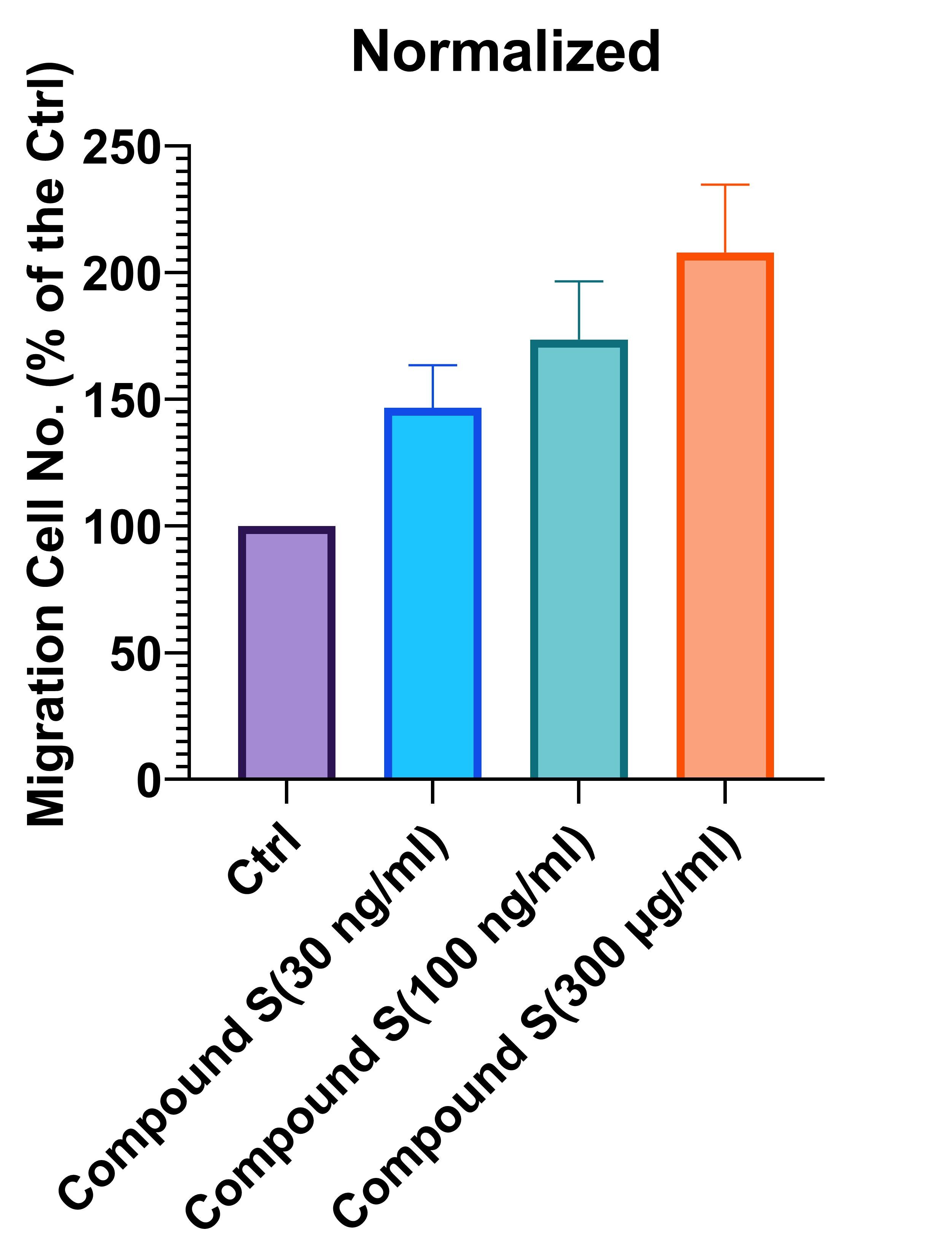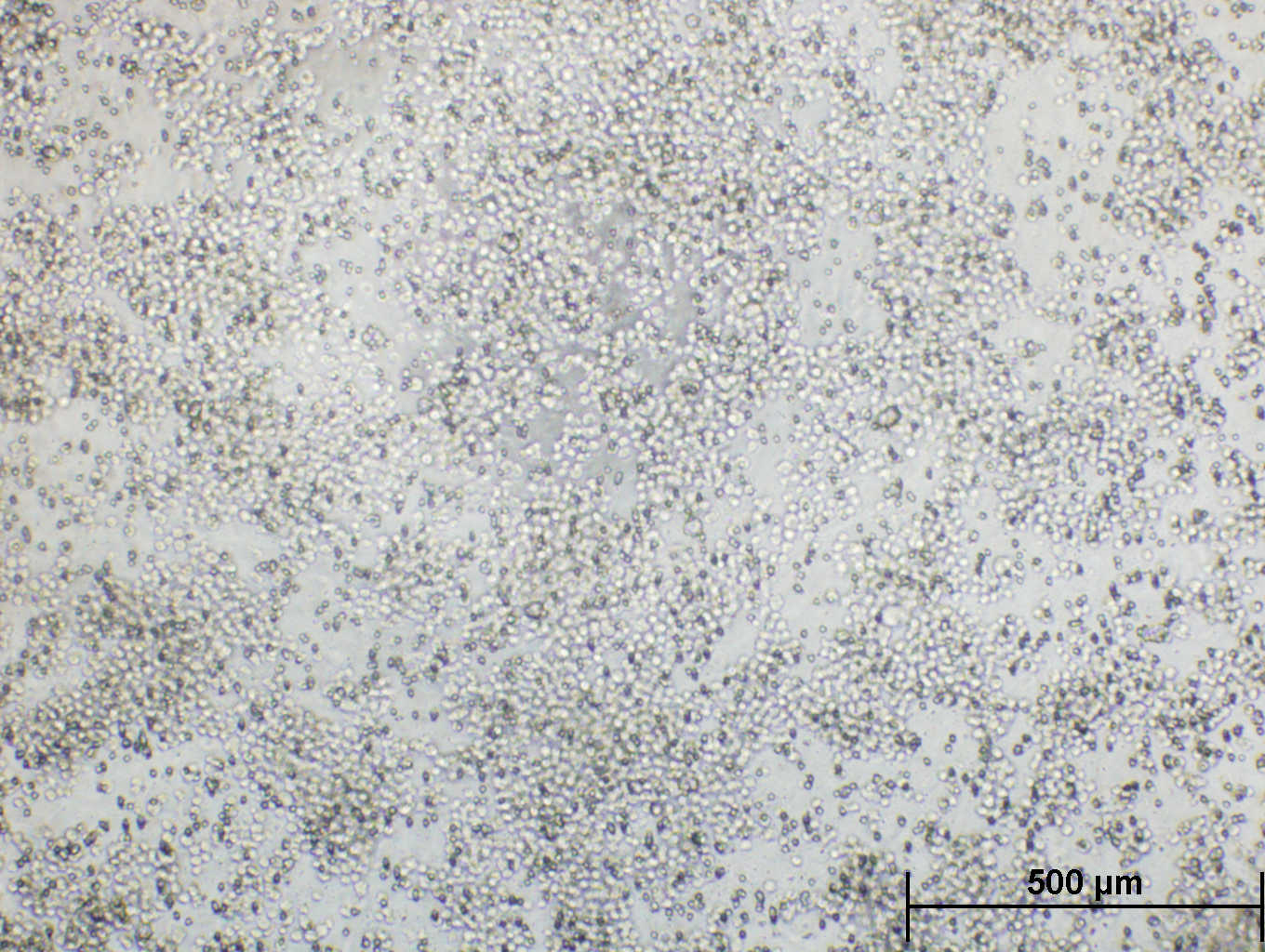Cultrex Cell Migration Assay
Discontinued Product
Cultrex Cell Migration Assay Summary
24-well and 96-well kits that provides a flexible and standardized format for the quantification of cell migration in response to chemoattractants.Why Use Cultrex Cell Migration Assay?
Cultrex Cell Migration Assays were originally created in an effort to accelerate the screening process for compounds that influence chemotaxis, which is a fundamental component of angiogenesis in embryonic development, immune responses, and wound healing. These assays offer a flexible, standardized, multi-well format for the quantification of the degree to which cells migrate in vitro in response to chemoattractants in the presence of inhibitors or stimulants. The Cultrex Cell Migration Assays are provided as either a single 96 well plate providing capacity for large screening experiments or as 24 individual inserts providing flexibility for smaller studies.
The Cultrex Cell Migration Assays utilizes a simplified Boyden chamber design with an 8 micron polyethylene terephthalate (PET) membrane. Cells attach to and migrate through the membrane in response to chemokines and growth factors. The porosity of this membrane is most appropriate for adherent epithelial or endothelial cells based on cell size. These assays are available in 24 and 96 well formats.
Kit Contents
• Cell Migration Chamber
• 25X Cell Wash Buffer
• 10X Cell Dissociation Solution
• Calcein AM
Note: The components for this kit may require different storage/shipping temperatures and may arrive in separate packaging.
Specifications
Limitations
For research use only. Not for diagnostic use.
Product Datasheets
Citations for Cultrex Cell Migration Assay
R&D Systems personnel manually curate a database that contains references using R&D Systems products. The data collected includes not only links to publications in PubMed, but also provides information about sample types, species, and experimental conditions.
15
Citations: Showing 1 - 10
Filter your results:
Filter by:
-
PKC-mediated phosphorylation governs the stability and function of CELF1 as a driver of EMT in breast epithelial cells
Authors: Massey, S;Kongchan, N;Gao, Y;Chaudhury, A;Olokpa, E;Karch, J;Malovannaya, A;Cheng, C;Zhang, X;Neilson, JR;
The Journal of biological chemistry 2024-09-27
-
Vadadustat, a HIF Prolyl Hydroxylase Inhibitor, Improves Immunomodulatory Properties of Human Mesenchymal Stromal Cells
Authors: K Zielniok, A Burdzinska, B Kaleta, R Zagozdzon, L Paczek
Cells, 2020-11-01;9(11):. 2020-11-01
-
EP4 and Class III beta-Tubulin Expression in Uterine Smooth Muscle Tumors: Implications for Prognosis and Treatment
Authors: J Reader, AK Harper, T Legesse, PN Staats, O Goloubeva, GG Rao, A Fulton, DM Roque
Cancers (Basel), 2019-10-18;11(10):. 2019-10-18
-
Cathepsin L-induced galectin-1 may act as a proangiogenic factor in the metastasis of high-grade serous carcinoma
Authors: MZI Pranjol, DA Zinovkin, ART Maskell, LJ Stephens, SL Achinovich, DM Los', EA Nadyrov, M Hannemann, NJ Gutowski, JL Whatmore
J Transl Med, 2019-07-03;17(1):216. 2019-07-03
-
MicroRNA-182 targets protein phosphatase 1 regulatory inhibitor subunit 1C in glioblastoma
Authors: L Liu, X Zhang, C Nan, Z Zhao, S Ma, W Li, H Hu, Z Liang
Oncotarget, 2017-09-27;8(70):114677-114684. 2017-09-27
-
Preclinical evaluation of the imipridone family, analogues of clinical stage anti-cancer small molecule ONC201, reveals potent anti-cancer effects of ONC212
Authors: J Wagner, CL Kline, MD Ralff, A Lev, A Lulla, L Zhou, GL Olson, BR Nallaganch, CH Benes, JE Allen, VV Prabhu, M Stogniew, W Oster, WS El-Deiry
Cell Cycle, 2017-05-10;0(0):0. 2017-05-10
-
Musashi-2 (MSI2) supports TGF-beta signaling and inhibits claudins to promote non-small cell lung cancer (NSCLC) metastasis.
Authors: Kudinov A, Deneka A, Nikonova A, Beck T, Ahn Y, Liu X, Martinez C, Schultz F, Reynolds S, Yang D, Cai K, Yaghmour K, Baker K, Egleston B, Nicolas E, Chikwem A, Andrianov G, Singh S, Borghaei H, Serebriiskii I, Gibbons D, Kurie J, Golemis E, Boumber Y
Proc Natl Acad Sci U S A, 2016-06-06;113(25):6955-60. 2016-06-06
-
Biological Activities of Uric Acid in Infection Due to Enteropathogenic and Shiga-Toxigenic Escherichia coli.
Authors: Crane J, Broome J, Lis A
Infect Immun, 2016-03-24;84(4):976-988. 2016-03-24
-
SIRT6 deacetylates PKM2 to suppress its nuclear localization and oncogenic functions.
Authors: Bhardwaj A, Das S
Proc Natl Acad Sci U S A, 2016-01-19;113(5):E538-47. 2016-01-19
-
A Novel Peroxisome Proliferator-activated Receptor (PPAR)gamma Agonist 2-Hydroxyethyl 5-chloro-4,5-didehydrojasmonate Exerts Anti-Inflammatory Effects in Colitis.
Authors: Choo J, Lee Y, Yan X, Noh T, Kim S, Son S, Pothoulakis C, Moon H, Jung J, Im E
J Biol Chem, 2015-09-04;290(42):25609-19. 2015-09-04
-
Fenretinide Perturbs Focal Adhesion Kinase in Premalignant and Malignant Human Oral Keratinocytes. Fenretinide's Chemopreventive Mechanisms Include ECM Interactions.
Authors: Han B, Li S, Tong M, Holpuch A, Spinney R, Wang D, Border M, Liu Z, Sarode S, Pei P, Schwendeman S, Mallery S
Cancer Prev Res (Phila), 2015-02-24;8(5):419-30. 2015-02-24
-
Reprogramming of monocytes by GM-CSF contributes to regulatory immune functions during intestinal inflammation.
Authors: Dabritz J, Weinhage T, Varga G, Wirth T, Walscheid K, Brockhausen A, Schwarzmaier D, Bruckner M, Ross M, Bettenworth D, Roth J, Ehrchen J, Foell D
J Immunol, 2015-02-04;194(5):2424-38. 2015-02-04
-
Hypermethylation of the GABRE~miR-452~miR-224 promoter in prostate cancer predicts biochemical recurrence after radical prostatectomy.
Authors: Kristensen H, Haldrup C, Strand S, Mundbjerg K, Mortensen M, Thorsen K, Ostenfeld M, Wild P, Arsov C, Goering W, Visakorpi T, Egevad L, Lindberg J, Gronberg H, Hoyer S, Borre M, Orntoft T, Sorensen K
Clin Cancer Res, 2014-04-15;20(8):2169-81. 2014-04-15
-
MicroRNA-433 inhibits liver cancer cell migration by repressing the protein expression and function of cAMP response element-binding protein.
Authors: Yang Z, Tsuchiya H, Zhang Y, Hartnett M, Wang L
J Biol Chem, 2013-08-26;288(40):28893-9. 2013-08-26
-
MicroRNA miR-183 functions as an oncogene by targeting the transcription factor EGR1 and promoting tumor cell migration.
Authors: Sarver A, Li L, Subramanian S
Cancer Res, 2010-11-30;70(23):9570-80. 2010-11-30
FAQs
-
What is cell migration?
Cell migration is the movement of cells in response to a chemical stimulus; also known as chemotaxis. Cultrex® Cell Migration Assays evaluate cell migration based on the cells ability to traverse an uncoated membrane with 8 µm pores, in response to a chemotactic gradient. The cells must undergo cytoskeletal remodeling to fit into the pores and pull themselves through to the underside of the membrane.
-
Can the migration chamber be coated with fibronectin?
Yes, the migration chamber can be coated with fibronectin.
-
The kit comes with both black and clear microplates. Do I need to use both?
The entire assay may be conducted in either the clear or black assay plate (provided in3455-096-01), if desired. The black assay plate provides increased sensitivity and reduced background for plate readers that read from the top. The clear assay plate provides compatibility for plate readers that read from the bottom. Some researchers have used the clear assay plate for the invasion step and the black assay plate for detection (top read).
-
Is the migration chamber treated?
The Boyden Chamber Insert with 8.0 µm polyethylene terephthalate (PET) membrane is tissue-cuture treated. For cell invasion assays, this chamber can be treated with extracellular matrix components Laminin I, Collagen I, Collagen IV, and Basement Membrane Extract (BME), Regular and PathClear®. Complete cell invasion assays are available for each of these ECM components.
Reviews for Cultrex Cell Migration Assay
Average Rating: 4 (Based on 2 Reviews)
Have you used Cultrex Cell Migration Assay?
Submit a review and receive an Amazon gift card.
$25/€18/£15/$25CAN/¥75 Yuan/¥2500 Yen for a review with an image
$10/€7/£6/$10 CAD/¥70 Yuan/¥1110 Yen for a review without an image
Filter by:


